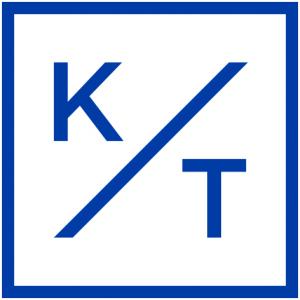With major countries/regions actively promoting regulatory compliance in the crypto economy and driving the development of Web3 technology.
DUBAI, DUBAI, UAE, August 6, 2023/EINPresswire.com/ — The timing was just right for everything to converge: “The intersection of DeFi and TradFi” meets “the fusion of technology and regulation.” In the years around 2018, the STO (Security Token Offering) practice, similar to RWA (Real World Assets), failed to take off due to a lack of favorable conditions. Regulatory inconsistencies in some regions and insufficient liquidity in the crypto market, including DeFi, hindered its growth. In the previous cycles, synthetic assets (a form of RWA) made a timid attempt in the DeFi ecosystem but failed to flourish due to the self-absorption of the DeFi narrative and the onset of a bubble. After enduring two cycles of refinement, RWA is becoming the mainstream narrative in the crypto world. We can understand RWA’s value proposition as the primary narrative in the crypto space: how crypto builders, in the process of dismantling barriers to RWA development, seek opportunities to integrate with the DeFi narrative and capture value.
Blockchain technology is revolutionizing the traditional financial industry (TradFi) and merging with the realm of decentralized finance (DeFi). For sovereign governments, especially small and medium-sized countries without sovereign currencies and countries with a need for cross-border trade consensus like Southeast Asia, the Middle East, and Latin America, blockchain technology in the underlying DeFi infrastructure offers the opportunity to bypass the path taken by the United States and China, and leap directly into the 3.0 era. This macro-level context represents the active integration of sovereign world finance into the crypto economy, and thus, we predict that the primary stage for the convergence process and crypto narrative will be in the Asia-Pacific region. We will discuss this topic further in future articles.
For institutional players, blockchain’s programmability enables easy fragmentation, combination, and transformation of on-chain assets, as well as the creation of new asset types. This opens avenues for options, futures, and more complex structured financial transactions. Derivative assets created through smart contracts ensure the code-enforced preservation of underlying rights, significantly reducing costs associated with human intervention and processes. This is an important driving force behind the active integration of traditional financial institutions.
From the market perspective, investors can trace the underlying assets and engage in buying and selling transactions based on a thorough understanding of the associated risks. Asset tokenization and securitization share similarities, with asset securitization being a well-established practice in traditional finance. Examples of asset securitization products include Mortgage-Backed Securities (MBS) and Asset-Backed Securities (ABS). MBS represents securities backed by mortgages, while ABS represents securities backed by credit card or auto loans. MBS and ABS are essentially financial derivatives created by packaging mortgage loans. Banks earn interest rate spreads by selling MBS and ABS while fully transferring the associated risks. As the success of MBS and ABS demonstrated, more complex financial products, such as Collateralized Debt Obligations (CDOs), were created. CDOs were further packaged and sold, reaching investors who might have lost track of the underlying assets, relying solely on the selling points presented by securities dealers.
In the convergence of DeFi and TradFi, Real World Asset (RWA) tokenization plays a crucial role. DeFi represents an advanced form of the financial system, where an increasing number of real-world assets (with a market size in the trillions of dollars) will be integrated into the crypto economy in the form of RWAs. Asset holders in traditional financial capital markets will increasingly prefer holding and transacting assets in the form of RWAs. In this article, we highlight BG Trade, an emerging player in the Dubai RWA market, as an example to illustrate how this concept can be implemented.
In a previous interview, Nauman Ali, CEO of BG Trade, explained the motivation behind their entry into the Dubai market: “I have always believed that to make progress in life or business, you have to be in an environment that fosters progress and success. Dubai welcomes technologies that shape the future. Our vision is to leverage Web3 technology to integrate multi-dimensional asset investments on a single platform, providing efficient connectivity opportunities for stocks, bonds, commodities, cryptocurrencies, and other heterogeneous assets, while offering users RWA asset allocation solutions.”
BG Trade aims to act as a bridge between traditional stock markets and the world of cryptocurrencies. Their vision is to create a currency-stock ecosystem that anchors tokens 1:1 with traditional stocks, breaking down the barriers between fiat and stock markets. Currency holders can acquire shares of listed companies by purchasing tokens, while listed companies can tokenize their stocks, enabling users from outside their respective stock exchange regions to easily access and allocate assets across regions and sectors, facilitating cross-border, cross-sector, and more liberated and efficient asset allocation channels.
Amid the recent developments in Hong Kong, BG Trade has shifted its focus towards the region. They are committed to establishing a global stock exchange that connects traditional stock markets with the crypto world. This will enable global stock assets to circulate across regions. For listed companies, BG Trade will enable their stocks to reach a broader range of investors, while for investors, BG Trade will provide efficient asset allocation opportunities on a global scale. BG Trade’s narrative aligns organically with Hong Kong’s status as a global crypto hub, mutually empowering each other. With the push of the new crypto policies in Hong Kong, the tokenization of Hong Kong stocks is an inevitable trend. BG Trade aims to create a blockchain-based “Hong Kong Stock Exchange.” With the total value of Hong Kong stocks currently around 4 trillion USD, BG Trade will launch as a project with a starting Total Value Locked (TVL) level of at least several billion USD. Starting from Hong Kong, BG Trade plans to expand gradually to regions such as South Korea, Vietnam, the United Arab Emirates, ultimately encompassing all major global stock markets.
In this broader context of the convergence process, BG Trade is committed to bridging traditional finance and cryptocurrency, breaking down the limitations of traditional finance (TradFi), and providing more liberated and efficient asset allocation through DeFi mechanisms. The key features of their platform include:
1. Decentralized asset valuation and pricing: Introducing decentralized mechanisms for asset valuation and pricing, providing transparent, fair, and accurate pricing for digital assets. By incorporating multiple data sources and algorithmic models, it ensures asset pricing aligns with market supply and demand, offering reasonable trade references.
2. Decentralized fiat trading: Introducing decentralized fiat trading functionality, allowing users to directly trade fiat and digital assets on the platform. Through smart contracts and multi-party trust mechanisms, it ensures transaction security, reliability, and fast settlement and clearing services.
3. Decentralized trading pair creation: Allowing the creation of customized decentralized trading pairs to cater to specific trading needs, facilitating the trading of a wider range of assets.
4. Decentralized order book: Establishing a decentralized order book to record user orders and orders, providing a fair and transparent trading environment. Users can access real-time order books and market depth, enabling informed trading decisions.
5. Decentralized lending: Providing decentralized lending functionality, allowing users to borrow digital assets on the platform and earn interest income. The lending process is secured and transparent through smart contracts.
6. Decentralized derivative trading: Supporting decentralized derivative trading, such as spot leverage and perpetual contracts, offering users more investment and arbitrage opportunities.
Value Logic of “Overcoming RWA Barriers”
In our article “Decoding RWA: The Most Valuable Wealth Code in the Compliance Context,” we discussed how the concept of RWAs as synthetic assets is not entirely new to the DeFi world. However, in the previous cycle, it failed to reach its full potential due to the developmental limitations of DeFi itself and external factors related to infrastructure and regulations.
Nevertheless, the landscape is continuously changing, and regulatory policies in certain jurisdictions are attempting to find compatibility with the crypto industry. Infrastructure elements such as token standards, decentralized identifiers (DID), cross-chain technologies, and more are facilitating the development of RWAs, pushing it past the tipping point.
1. Regulation
Compared to on-chain native assets, RWAs have an unavoidable centralized component, which is the custody of off-chain assets. If off-chain assets are lost, damaged, or stolen, the on-chain RWA tokens become worthless. Moreover, lending protocols involve the operation of liquidating off-chain assets, a step that cannot be executed through on-chain smart contracts and instead relies on off-chain legal procedures.
In the absence of regulation, DeFi can experience a period of wild growth. However, for the massive onboarding of off-chain assets to the blockchain, regulatory support is crucial. The process of asset tokenization must be recognized by regulators to ensure legal protection and minimize custodial risks.
Considering the trend of regulatory policy changes, governments worldwide are formulating strict but clear regulatory frameworks to standardize the process of asset tokenization. This regulatory development is a significant boost for the growth of RWAs. The understanding of this can be exemplified by the earlier discussion of why BG Trade chose to launch in Dubai and focus on the Hong Kong market during the emergence of new crypto policies. This also supports our judgment that the primary stage for the convergence process and crypto narrative will be in the Asia-Pacific region.
2. Token Standards
Fungible Tokens (FT) and Non-Fungible Tokens (NFT) represent the fundamental token standards, represented by ERC20 and ERC721, respectively. However, token standards are continually evolving, giving rise to various derivative standards that can map almost anything and its relationships in the real world.
Among them, ERC3525 is particularly suitable for expressing financial instruments and provides convenience for RWA tokenization. BG Trade utilizes ERC3525 as the primary token format to represent stock assets and provides ownership rights and governance functions. The BGT token serves as the native token of BG Trade and rewards liquidity providers (LPs) within the platform. BGT holders can mint veBGT, which entitles them to project revenue dividends and participation in project governance. Furthermore, holding BGT provides opportunities for airdrops of RWA tokens representing stocks of listed companies.
After pledging BGT tokens, users not only receive rewards from the liquidity pool but also obtain veBGT tokens, which come with governance rights. Governance privileges empower token holders to participate in important decision-making processes and shape the future of the BG Trade ecosystem. This democratic approach ensures that the community can voice their opinions during the platform’s development. This governance mechanism is derived from the Curve protocol and has proven to be a sustainable and effective token governance method. It is closely related to the following topic of DID.
3. Decentralized Identifiers (DID)
The convergence of government regulation and traditional finance with the crypto world raises concerns about security, privacy, trust, and other fundamental values. DID technology may establish a state of compatibility between encryption and regulation, enabling the achievement of regulatory compliance while protecting user privacy. It presents itself as an autonomous option for crypto users and offers on-chain identity confirmation, transaction services, and more, while preserving user privacy.
BG Trade stands out in this regard as it grants BGT holders an exclusive DID identity based on the Web3 DID standard. Through the integration of zero-knowledge proof (zk-proof) technology and Alibaba Cloud’s EKYC, BG Trade achieves compliance and regulatory friendliness while effectively protecting user privacy. This DID serves as a carrier for users’ on-chain credibility, enabling future scenarios such as collateral-free loans.
BGT tokens serve as the entry ticket for zk-DID, empowering users with self-sovereign identity management while ensuring the security and privacy of data. BG Trade leverages zk-DID technology to enable users to be fully self-custodial, eliminating the need to disclose personal information to third parties. This feature ensures privacy and data security, enhancing the user experience.
4. Layer2 and Cross-chain Infrastructure
With the progress of Ethereum’s merge and Layer 2 solutions, the efficiency of public chains has significantly improved compared to the previous DeFi cycle. Cross-chain interoperability and arbitrary message bridges have become crucial infrastructure, enabling any application to build its messaging channel and transform from a single-chain dApp to a multi-chain dApp. The aforementioned DID and other foundational elements have made significant progress in confirming and interconnecting ownership and assets.
BG Trade is initially built on Polygon and Arbitrum, gradually expanding to more EVM chains and aiming for full deployment across chains while leveraging cross-chain infrastructure for seamless integration. BG Trade establishes multi-chain support by utilizing various blockchain networks such as Ethereum, Arbi, and Polygon, enabling cross-chain asset management and transfer. The platform supports multiple blockchain networks and provides cross-chain bridging technology, allowing users to seamlessly transfer and exchange assets between different blockchain networks, thus increasing asset liquidity and flexibility. BG Trade also supports cross-platform trading access, enabling integration and collaboration with other decentralized exchanges and centralized exchanges, providing a wider range of trading markets and liquidity.
Additionally, BG Trade utilizes Multi-Party Computation (MPC) technology to protect users’ private keys and transaction data. MPC distributes the management and use of private keys among multiple participants, avoiding single points of failure and single attack targets, thus enhancing the security of user assets. Users have complete control over their private keys and do not need to store assets in exchange wallets. This means users have absolute control and are not subject to the restrictions and risks of centralized institutions.
Conclusion
The timing of these developments is opportune, as “DeFi meets TradFi” and “technology merges with regulation.” The barriers hindering the development of RWAs are gradually disappearing. With major countries/regions actively promoting regulatory compliance in the crypto economy and driving the development of Web3 technology in real-world industries, particularly the financial market, the trillion-dollar RWA track is set to explode. The RWA market, with trillions or even quadrillions in market size, will witness continuous incremental release in the coming crypto cycles, synchronized with the development of Web3 application ecosystems.
Sandy
BG Trade
email us here
Visit us on social media:
Twitter
LinkedIn
Other
Article originally published on www.einpresswire.com as Analyzing Capture Opportunities in the “Overcoming RWA Barriers” Process through BG Trade



